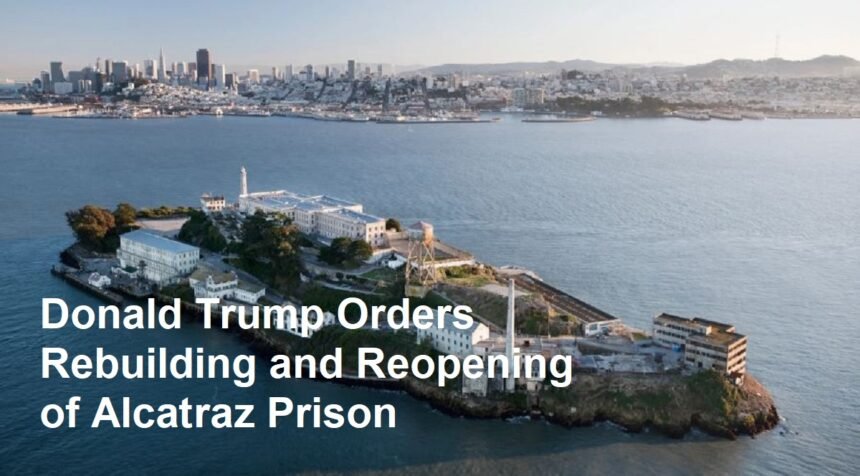On May 4, 2025, former U.S. President Donald Trump announced his directive to rebuild and reopen the infamous Alcatraz prison, located on an island in San Francisco Bay, California. Alcatraz, once known as one of the most secure federal prisons in the United States, was closed in 1963 and has since become a popular tourist attraction and National Historic Landmark.
The Announcement
Trump made the announcement via his social media platform, stating that he is directing the Bureau of Prisons, along with the Department of Justice, FBI, and Homeland Security, to reopen a substantially enlarged and rebuilt Alcatraz. The plan is to use the facility to house the country’s “most ruthless and violent offenders.” This move is part of a broader effort by Trump’s administration to overhaul the federal prison system and address issues related to crime and immigration detention.
Background on Alcatraz
Alcatraz was originally a military fort and later converted into a federal prison in 1934. It was renowned for its isolation, surrounded by cold waters and strong currents, which made escape nearly impossible. The prison housed some of America’s most notorious criminals, including Al Capone, George “Machine Gun” Kelly, and Robert Stroud, the “Birdman of Alcatraz.”
Despite its reputation, Alcatraz was closed due to high operational costs and deteriorating infrastructure. Everything had to be transported by boat, making it nearly three times more expensive to operate than other federal prisons. Since its closure, the island has been managed by the National Park Service and serves as a major tourist destination.
Trump’s Rationale
Trump described reopening Alcatraz as “just an idea I’ve had” amid frustrations with what he called “radicalized judges” who insist on due process for those being deported or prosecuted. He views the prison as a symbol of law and order and a potential solution to housing the most dangerous criminals in a secure facility.
The announcement also comes amid Trump’s controversial use of an 18th-century law to expedite deportations of alleged criminals and gang members without traditional judicial processes. Additionally, Trump has floated the idea of sending U.S. citizens convicted of violent crimes to a maximum-security prison in El Salvador, known as CECOT, though this plan faces legal and ethical challenges.
Challenges and Criticism
Reopening Alcatraz as a modern prison poses significant challenges. The facility’s infrastructure is outdated, and bringing it up to current standards would require massive investments. The Federal Bureau of Prisons has been closing other prisons due to similar issues, making the reopening of Alcatraz a costly and complex endeavor.
Moreover, many officials and public figures have questioned the feasibility and seriousness of the proposal. Former House Speaker Nancy Pelosi, whose district includes Alcatraz Island, called the plan “not a serious one,” emphasizing that the island is now a popular national park and tourist attraction.
Historical and Cultural Significance
Alcatraz holds a unique place in American history and culture. It has been the subject of numerous films, books, and documentaries. The prison’s notoriety and the stories of its inmates have made it a symbol of the American penal system’s harshest era.
Reopening the prison would mark a dramatic shift from its current status as a historic site to an active correctional facility, raising questions about preservation, tourism, and community impact.
In summary, Donald Trump has ordered the rebuilding and reopening of Alcatraz prison to house the nation’s most dangerous criminals, framing it as a symbol of law and order. While the plan faces logistical, financial, and political hurdles, it reflects Trump’s broader approach to criminal justice and immigration enforcement.









